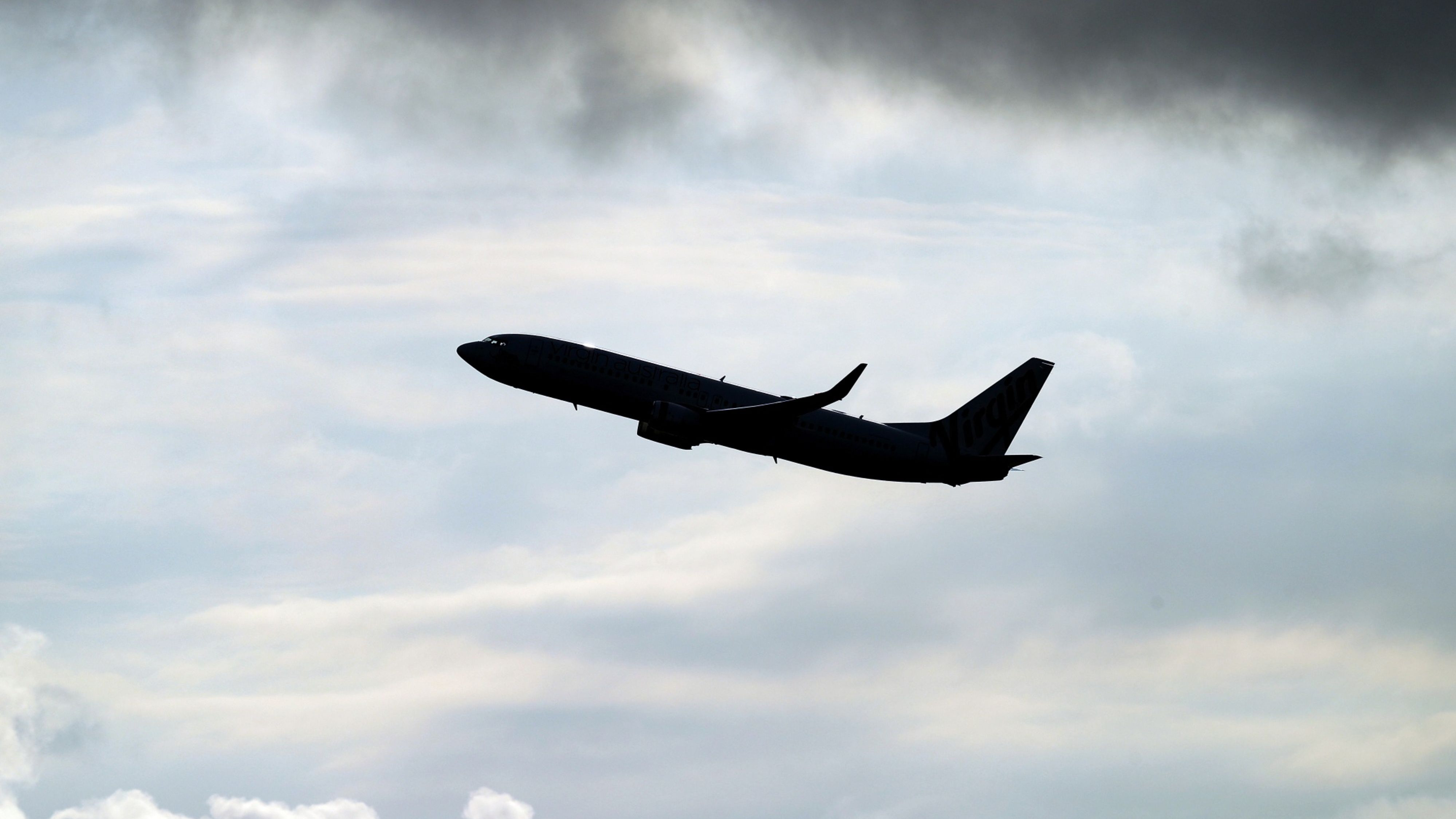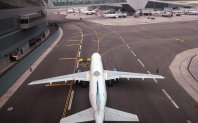
by Veronika Denizova
After three challenging years, the global aviation industry is facing another challenge: delay in new aircraft deliveries. At the same time the leading manufacturers Airbus and Boeing can't keep up with orders and delay their fulfillment, which limits recovery in the sector, makes planning difficult and keeps ticket prices high.
While the air carriers from United Airlines to Air India are placing orders for hundreds of new planes, Boeing and Airbus are boasting huge new deals. But this doesn’t mean that they can fulfil them with ease. Jefferies LLC estimates that in the end of 2022, globally there are ordered and not delivered 12 720 planes. The aircraft giants, which enjoy a comfortable duopoly, have sold off all of their single-aisle models that will be produced until at least 2029. But the orders are not fulfilled on time. According to the founder or Air Lease and a veteran from the airline industry, Steven Udvar-Hazy, every aircraft delivered to one of the leading lessors in the past two years has arrived late. We haven’t gotten one airplane on time, whether it’s a 737 Max or a 787 or an A330, A350”, said Hazy, cited by Bloomberg. According to him, the biggest problem is with the A321neo model, where the delivery delay is at least six months.
In December, JetBlue Airways announced that is under contract to receive 29 aircraft from Airbus this year, but is likely to receive only 22. “I think we’re all well aware that they’re struggling from ramp-up challenges driven by manpower and supply chain. We’re working hand-in-hand with them to manage through those.” JetBlue’s CFO, Ursula Hurley, said on the carrier’s quarterly call.
In the end of last year, American Airlines CFO Derek Kerr said the company expects to deliver 19 of the Boeing 737 Max in 2023, against an initial commitment from the manufacturer for 27. The largest low-cost carrier in the US, Southwest Airlines, has been forced to cut the number of flights due to the shortage of new planes and pilots. The company has cut from 5,000 to around 4,300 daily flights while it waits for new deliveries from Boeing, the FT reports.
According to Alexander Bogoyavlenski – pilot and host of the Air Show on Bulgaria on air, we cannot talk about a common deficit of planes, but rather for a delayed delivery of new and efficient aircraft. "The global passenger fleet exceeds 24,000 aircraft, of which approximately 71% are currently active. The rest are in the deserts, where they are gradually reactivated and return to the major airports," he emphasizes. According to him, the current problem has several points of view. "In the eyes of the airlines, not only is there no shortage, but many aircraft continue to be parked in long-term storage on the ground. It's good business for old and new airports in remote and dry spots on different continents to keep these planes rust-free and serviceable as soon as the carriers need them again. On the other hand, it can be said that there is a certain shortage of a certain type or specific models of aircraft. Among these types are some so-called "conversions" - passenger models that go through a complete transformation into cargo and in the pandemic and post-pandemic period are included in the rapidly growing cargo fleet, which experienced a renaissance thanks to the greatly increased demand for express cargo transportation," says Bogoyavlenski. Among the most sought after are the Boeing 737-800, 767 and 777. Of the popular models of passenger aircraft, we can mention especially those of the new generation, which provide airlines with up to 15% more economical operation, less emissions and increased comfort for passengers – these are Boeing 787 Dreamliner and Airbus A350.
The reason for the current situation is rooted in a combination of supply chain issues, staffing shortages and a surge in demand. In the peak months of the pandemic, the search for flights collapsed. People stayed at home because of the strict restrictions, which made the airlines to ground their planes and cancel or postpone their orders for new ones. The sudden recovery after that, caught the carriers unprepared to respond efficiently. Airlines are also struggling with the shortage of spare parts to repair and maintain of the current fleet. Directors from Boeing and Airbus commented before the media, that the problems with the supply chain, particularly in engines, and staff shortages have prevented them from ramping up production to meet the rapid recovery in travel. In addition, the leading aircraft manufacturers also have some specific production problems, as noted by Alexander Bogoyavlenski. "The Boeing 787 Dreamliner disappeared from delivery lists shortly after the start of the pandemic due to Boeing's production and organizational headaches, which nearly bankrupted the 100-year-old company. The federal aviation administration had written hundreds of orders to fix production problems before recertifying the model and changes in late 2022, which gave the green light to resume deliveries, albeit at a much slower pace. The Boeing 737-Max was also halted in deliveries due to the crashes in Indonesia and Ethiopia, with more than 500 manufactured and undelivered machines piling up in factories, which did not go to customers until early summer 2022. Airbus has also been forced to slow the pace of production and deliveries, firstly because of carriers' refusal to accept new aircraft during the period when aviation came to a standstill due to Covid, and in the last year because of severely compromised supply chains for materials and components from subcontractors who suffer from the lack and shortage of raw materials because of the war in Ukraine", says Bogoyavlensky.
Managers in the airline industry do not foresee recent resolution of supply chain disruptions. “We’re not anticipating or suggesting that the supply chain world is going to get much better in the near term,” CEO of Boеing Dave Calhoun said. According to him, the sphere will remain challenging throughout the entire 2023. Airbus CEO Guillaume Faury predicts that the supply chain will not stabilize until at least mid-2023. Such signals are also coming from parts manufacturers. “While we are working many actions across our businesses every day to mitigate the impacts of supply chain constraints and labor availability we do expect these pressures will continue to persist into next year as well,” said Raytheon Technologies CFO Neil Mitchill. Such an environment suggests that delays in new aircraft deliveries will also continue, at least in the short term.
One of the possible solutions to the problem is the return to service of the planes grounded during the pandemic. Alexander Bogoyavlenski points to Lufthansa Group as a recent example of this which decided to return to service half of its former A380 superjumbos, which it had given up permanently. The older four-engined and equally inefficient A340-300 and -600 are also returning to the fleet to meet the increased demand for intercontinental flights. “Other carriers such as Qatar Airways, Qantas, Etihad, Singapore Airlines have also brought back the giant A380s to meet demand. American companies are reactivating old planes, and Chinese companies have almost no parked machines anymore," says the host of the Air Show.
The bad news for passengers is that the delay in the delivery of new aircraft along with the rest of the accumulated problems in the aviation sector, can lead to permanent increase in flight prices, warn some experts. Especially with the return of Chinese travelers, which will cause another spike in demand. “People got used to lower fares during the pandemic and China’s reopening will make it worse,” Ajay Awtaney, the founder of frequent flier website LiveFromALounge.com. According to Alexander Bogoyavlenski, the major problems in the industry are primarily related to the shortage of personnel, who literally "run away" from critical units such as airports, ground handling companies and air traffic control. “And it happened mainly not because of personnel’s desire, and because of the short-sighted policies of the companies in these sectors, which massively laid off staff in the pandemic, who subsequently improved in other industries. "Now the recruitment of highly qualified personnel is extremely slow and difficult due to slow training and certification, and of low-skilled personnel – due to the reluctance of former personnel to return to the harsh conditions of their low-paid former jobs," he points out. The result from all this, plus inflation, recession and supply chain crisis, raw materials and fuel because of the war, reflected in a persistent increase in the cost of flights and persistently high ticket prices and related fees.
THE BOTTOM LINE The delay in the supplies of new aircraft along with the rest of accumulated problems of the aviation sector, can lead to persistent increase in the cost of flights.



